Ban Thach mat weaving village, nestled in Quang Nam, is a gem among the oldest traditional craft villages in the region. Here, visitors have the unique opportunity to witness the intricate process of crafting vibrant mats, each imbued with the rich cultural heritage of Quang Nam.
The mention of Ban Thach mat weaving village in Quang Nam immediately evokes images of skilled artisans diligently working at their looms, the rhythmic sound of the shuttle weaving, and the colorful fibers dyed and drying under the sun. Visiting Ban Thach mat weaving village is a must-do experience if you are journeying through Quang Nam. For more insights into Vietnam’s cultural treasures and travel destinations, explore Vietnampeace.com and embark on a journey of discovery and tranquility.
1. Overview of Ban Thach weaving village
Exploring Quang Nam’s famous traditional craft villages becomes even more complete if you visit Ban Thach weaving village, learning about the unique weaving process that has survived for over 500 years.
1.1. Where is Ban Thach weaving village located?
Quang Nam is famous for its many traditional craft villages, among which Ban Thach mat weaving village is located in Dong Binh hamlet, Duy Vinh commune, Duy Xuyen district, Quang Nam province. Dong Binh hamlet, renowned for Ban Thach weaving village, is secluded from the outside world like an island floating amidst three rivers (Thu Bon River, Ly Ly River, and Truong Giang River).
1.2. Origin of the Ban Thach Weaving Craft Village
According to historical records, during the Trinh Nguyen civil war period, people from regions from Ha Tinh to Thai Nguyen migrated south to Quang Nam, where they found favorable natural conditions and decided to settle and establish their livelihoods. During this migration, people from various provinces brought the craft of mat weaving to develop in this area.
With its abundant nature, the area boasts vast fields of sedge and reeds, standing shoulder-high, swaying in the wind. Utilizing the natural advantages, the locals used sedges and reeds to weave durable and sturdy mats, famous throughout the region. With its advantageous location – situated at the confluence of major rivers, Ban Thach became a bustling trading hub.
The craft village has a history of over 500 years of formation and development. The products of Ban Thach weaving village are famous far and wide, once being tribute items for the royal court and nobility.
2. What exciting things do Ban Thach weaving village tourism offer today?
2.1. Ban Thach mat weaving craft village
Over the past 500 years, Ban Thach weaving village has experienced many ups and downs in history, yet this traditional craft remains integral to the lives of the locals. According to statistics, Ban Thach has around 1,356 inhabitants, with over 700 people engaged in mat weaving during its peak period.
The locals’ income here is almost 90% dependent on mat weaving and selling. Therefore, nearly everyone in the village, young and old, focuses on mat weaving, each person with their own task. However, in recent years, mat products have become increasingly difficult to sell, with low prices, prompting some to switch professions, with many bidding farewell to this traditional craft.
2.2. Listening to the story of Ban Thach mat weaving
When visiting Ban Thach weaving village, tourists can explore the process of creating beautiful mats by the locals.
The materials for making mats come from sedge and reeds. Locals will harvest the sedge, split it into small strands, and sun-dry them for about 4-5 days. When the mat strands are dried but retain their elasticity and strength, they undergo mat-making.
Dyeing process: After the mat strands are sun-dried to standard, they will be dyed. Locals dip each small bunch into a pre-cooked dye pot to achieve beautiful and colorfast dyeing. Dyed sedge strands are then sun-dried. It is essential to sun-dry evenly, avoiding mold from weak sunlight or breakage from strong sunlight.
Weaving process: A frame and weaving shuttle are necessary to weave Ban Thach mats. The weaving process requires two people, one handling the shuttle, threading the strands, and the other pulling the loom frame. Once woven, the mats are cut squarely, and the edges are secured to prevent fraying. The people of Ban Thach weaving village typically spend about 3-4 hours weaving each mat, producing 4-5 mats daily.
A unique feature of Ban Thach mat products is the intricate patterns created from dyed sedges and reeds, rather than printed patterns on the mats.
2.3. Explore Ban Thach mat weaving village market
In addition to exploring the traditional mat weaving process, tourists should not miss the local mat market when visiting Ban Thach weaving village. This unique point also makes tourists feel excited when visiting Ban Thach.
The village market gathers early, around 4-5 am, with a bustling and lively atmosphere. At the Ban Thach market, tourists can admire handmade mat products with intricate patterns and vibrant colors.
In conclusion, a visit to Ban Thach mat weaving village offers a profound journey into the rich tapestry of Vietnamese culture and craftsmanship. As evidenced by the centuries-old tradition of mat weaving, deeply ingrained in the lives of its residents, the village stands as a testament to resilience and ingenuity. Through exploring the meticulous process of mat-making, hearing the stories passed down through generations, and experiencing the vibrant atmosphere of the local market, visitors gain a deeper appreciation for the intricate artistry and community spirit that define Ban Thach. For those seeking to immerse themselves in the cultural heritage of Vietnam, a trip to Ban Thach weaving village is a must. For more information on Vietnam’s cultural treasures and travel destinations, visit Vietnampeace.com and embark on a journey of discovery and tranquility.
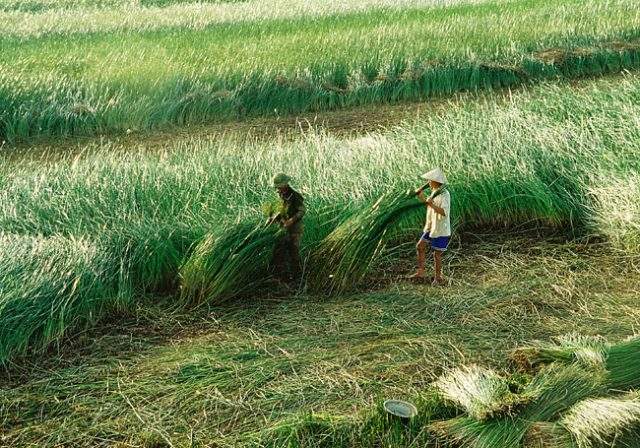
Along the banks of the Thu Bon River, the lush, green rushes of rushes (Photo ST)
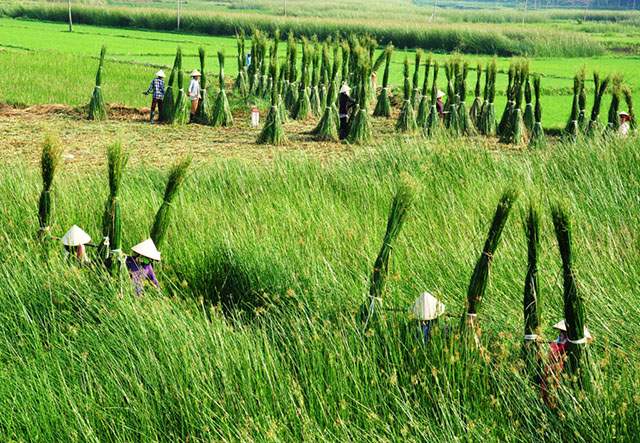
People happily reaped the rush to take home (Photo ST)
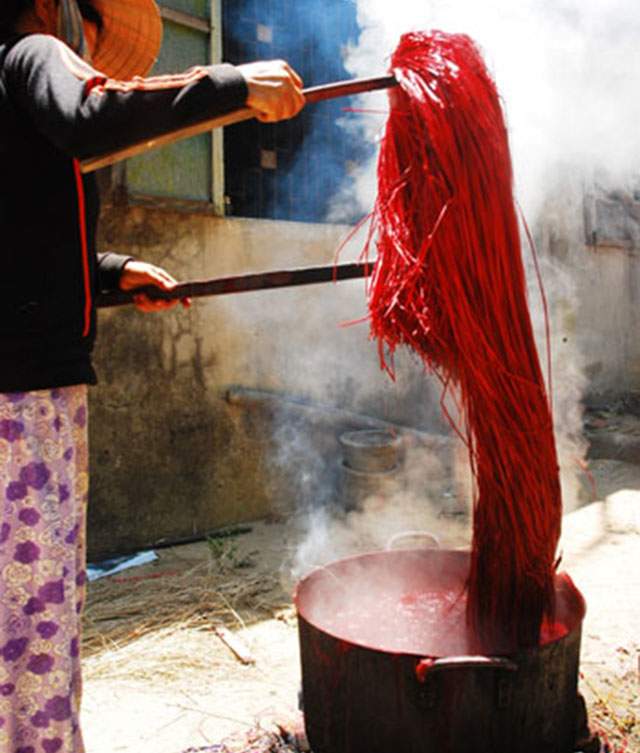
Brown yarn for dyeing (Image ST)
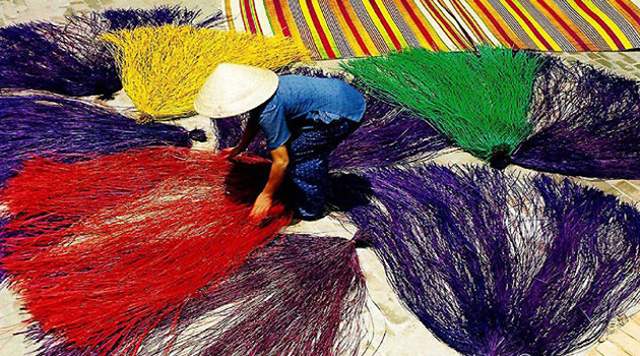
The colored fiber, after being dyed, will be exposed to drying (Photo ST)
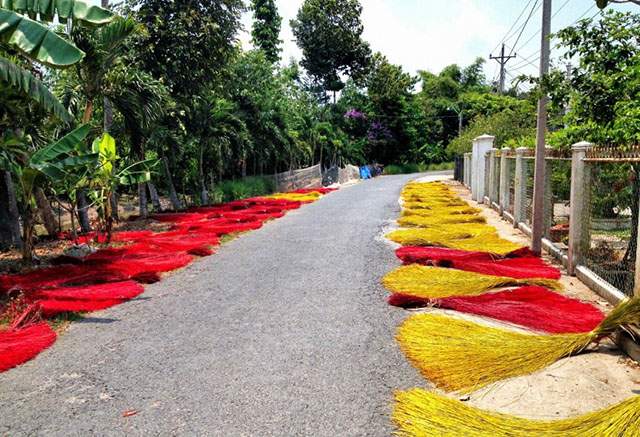
The dyed yarn should not be exposed to excessive sunlight due to brittleness or too mild sunlight because it is quickly moldy (ST Image).
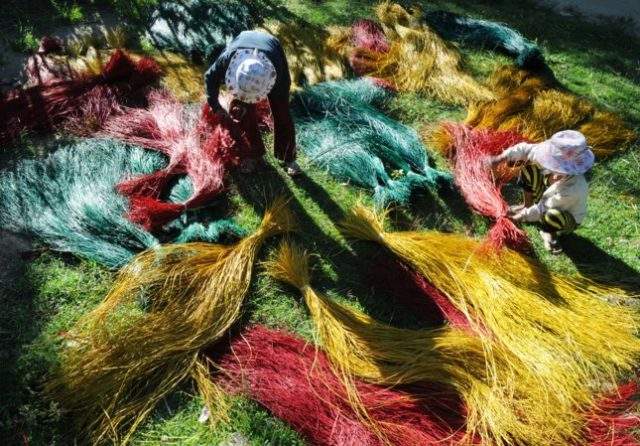
The sedge plants with colorful, vibrant green, red, purple, and yellow mixed with the sky and sky of the beloved Land of origin (Photo ST)
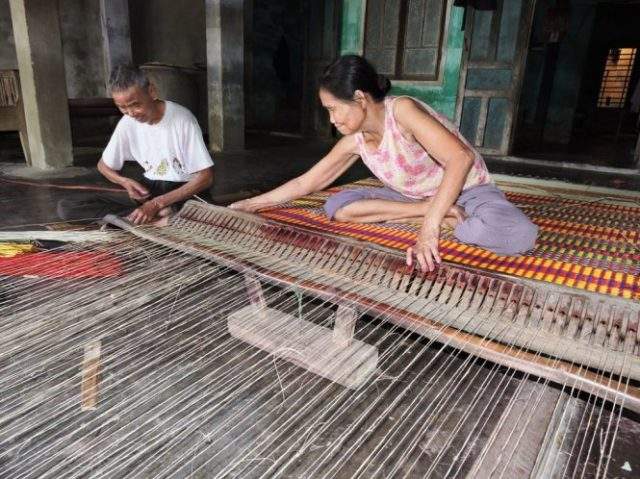
When weaving, two people need to coordinate rhythmically, meticulously, carefully (Photo ST)

The finished woven mat is dried to dry before being sold (Photo ST)
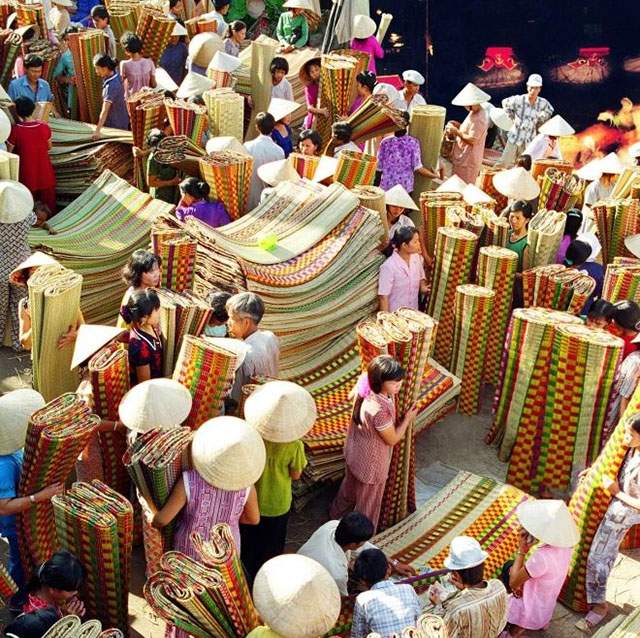
The bustling, crowded and bustling scene at Ban Thach village market market (Photo ST)
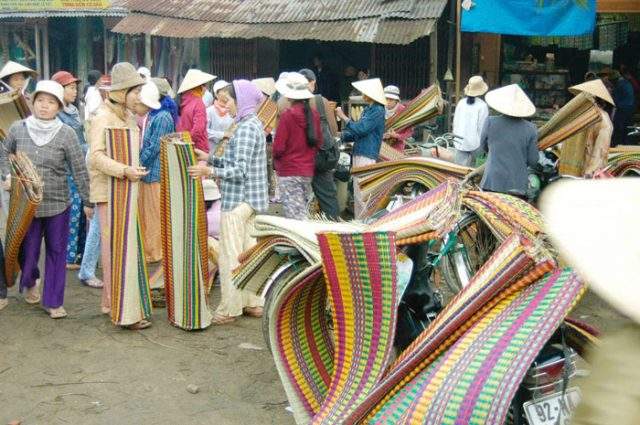
Fair opened here earliest in Quang (Photo ST)
